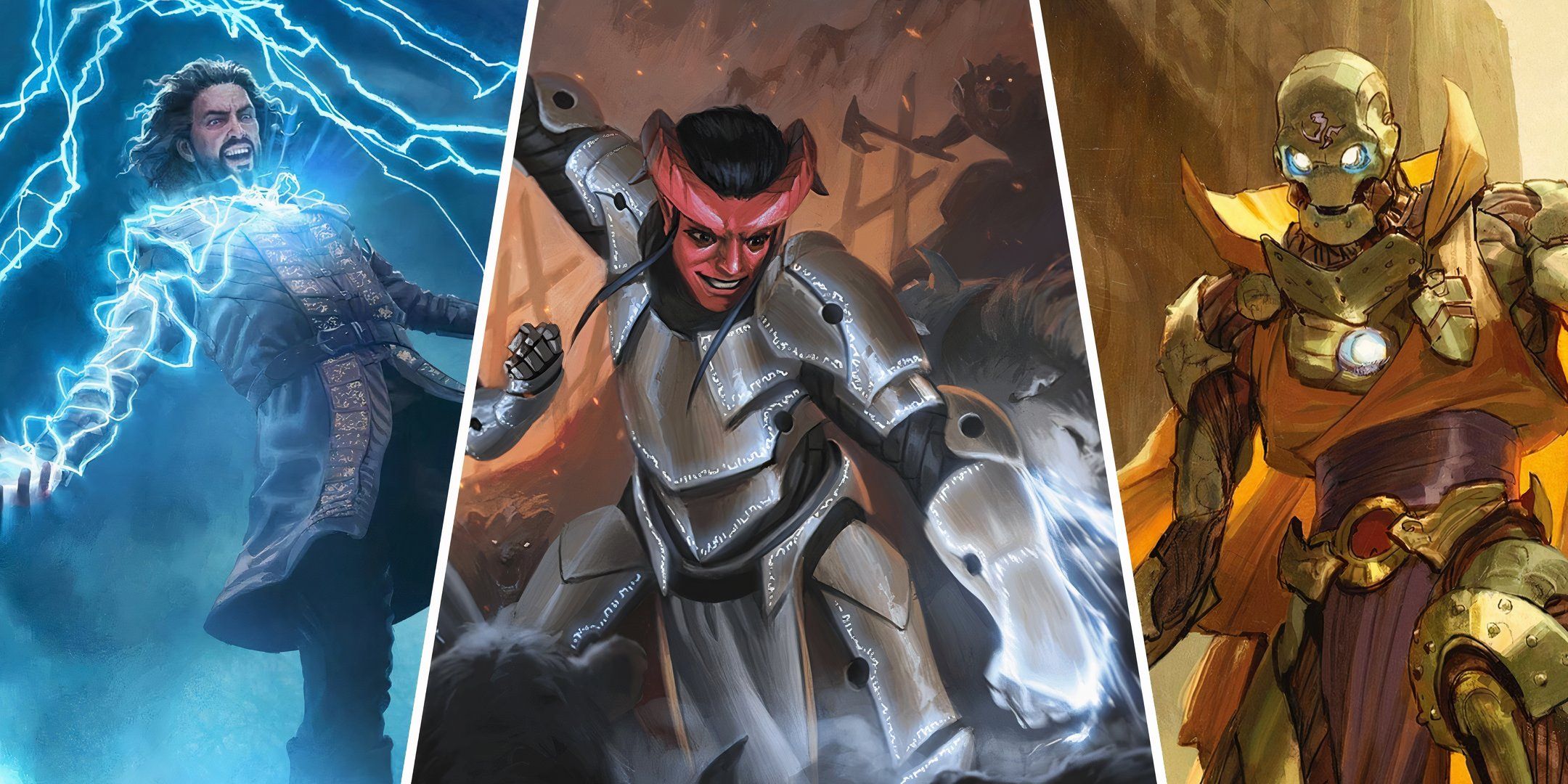Dungeons & Dragons: 8 Tips For Making An Artificer Villain

Summary
- Villains in D&D can be more than just liches or vampires, consider the artificer class for a unique threat.
- Make sure your artificer villain has high-tech weapons and constructs as minions to increase their threat level.
- Avoid cliches and tropes, give your villain a nuanced reason for their actions and focus on a single invention as their ultimate goal.
Villains in Dungeons & Dragons usually take the form of a wrinkly lich or undead vampire that has a menacing cackle and smells like a graveyard. When crafting a villain of your own, the classes available to the players can do more than just give you inspiration, but be the whole idea for one.
RelatedDungeons & Dragons: 10 Subclasses That Would Make A Great Villain
Never trust a mastermind rogue.
PostsArtificers are usually seen as cooky gnomes that make clockwork toys or steam-powered robots that sometimes go haywire. If an artificer had the same goals as Vecna with the intelligence and creativity of a player, then surely they would be the single greatest threat to the material plane.
8 Give Them High Tech Weapons
Artillerist Artificer Art via Wizards of the CoastWhat separates an artificer from any other spellcasters are the gadgets, gizmos, and inventions they shape with their magic. If an artificer is primarily using a sword or bow to deal death and destruction, then they aren't using their full potential and will not feel like a mad scientist to your players.
Depending on the time period or historical theme of your campaign setting, consider upgrading your artificer's weapons compared to what would be prevalent or even available. This could be a flintlock pistol, arcane railgun, or clockwork hammer, all of which feel more impressive than what the average guard would wield.
7 Use Constructs As Minions
A warforged strike squad unleashes an ambush inside a mechanical room by Claudio PozasThere are very little things an engineer or scientist will trust more than their own work, especially when it comes to enacting their evil plans. With enough resources and time, a high-level artificer can easily obtain and control multiple constructs that assist them without eating, sleeping, or pay.
Good examples of artificer-style constructs are Bronze Scouts, Tin Soldiers, Blade Scouts, Steel Defenders, and any homebrew warforged characters. These construct monsters should serve as the first line of defense for your artificer, and perhaps more intelligent variants could even be reasoned with.
Any creature that can be found on the plane of Mechanus is a good choice for inspiration.
6 Determine Their Reason For Artificing
Kas and the Crown of Lies by Lauren WalshEven Dr. Doofenshmirtz has a long list of reasons that led him to constructing diabolical designs, and so should your villain. This can also inform what style of artifice they focus on and what they choose to do with their machines of mayhem. Whatever happened to them should be the source of their motivation and wit, which is what is required to be an artificer.
RelatedDungeons & Dragons: 7 Tips For Running A Campaign Based On Fallout
Bring the post-apocalyptic Fallout vibes to your gaming table with these tips for running a Fallout campaign in D&D.
PostsThis backstory should also be made available to your players eventually, who can then use this information to get closer to their target, intuit the pieces of their grand plan, or discover crucial weaknesses. If your players are okay with it, you can even tie it into one of their backstories to make it a personal character goal.
5 Give Them Abilities Outside The Artificer Class
Chaos Channeler by David PalumboWhile you are making an artificer-style villain, this does not mean you are stuck with the artificer class abilities. You can use them for inspiration, pick and choose from various subclasses, or ignore them entirely as long as you give your villain clear abilities and drawbacks.
One of the first things you should ignore in the artificer class is any restrictions, such as the amount of magic items they can have active at once or especially the number of Steel Defenders they can make. As long as they are able to craft magically infused inventions, then they are an artificer.
The artificer shouldn't have zero restrictions, but should be allowed to do more than a player would.
4 Leave Thematic Clues
Candlekeep Mysteries Cover Art by Clint CearleyBefore even having met the villain, your players should have clues placed in their path that lead them to the conclusion that they are an artificer. This makes for a much more dramatic reveal with this type of villain, as they will be constantly wondering just who this person could be and marvel at their handiwork rather than their features.
Examples of these clues could be an abandoned or raided workshop littered with half complete projects and dusty blueprints scattered about the room, or catching a construct in the act of committing a crime. These clues are relatively simple but should always point to what the villain is capable of.
3 Give Them A Rival
Concept Art from Keys from the Golden Vault by Evyn FongAny great inventor or crafter needs constant inspiration in order to motivate them to grander and grander designs. Your artificer villain might be the greatest inventor in the world, but they weren't always, and you should include one or more NPCs that served as stepping stones for your villain's ambition.
RelatedDungeons & Dragons: The 12 Best Adventures For Long Campaigns
Ready for some exciting and lengthy adventures in D&D? Here's our selection of the best adventures for your campaign.
PostsThis can be an old mentor that was permanently injured, a university colleague who is on the side of good, or even one of your players if you can justify it. This NPC should know the inner workings of the villain's mind and will be an excellent source of information for your players, should they be convinced to help.
2 Don't Fall Into Tropes
Kenku Artificer by Dave GrecoOne of the quickest ways for your players not to take your villain seriously is to give them poofy white hair and a strange accent that makes them seem unhinged. This mad scientist character, along with the deformed and mistreated assistant, will most likely lead to disappointment and eye rolls from your players.
Their end goals should also be as nuanced as the machines they create. Making them want to control or destroy the world for the sake of controlling or destroying the world doesn't feel satisfying to overcome after having just smashed their constructs to pieces.
1 Give Them A Single Invention To Focus On
Art Via Tasha's Cauldron of EverythingWhile an artificer villain might craft hordes of constructs in their free time, their ultimate goal should be the creation or repair of a single invention that serves as the symbol of their threat and intelligence. This is to make disabling the machine or defeating the artificer a high priority as it adds stakes.
This machine could be anything, from a massive bomb underneath the capital city, a construct to rival Tiamat, or a weapon unlike anything that anyone has ever seen before. Whatever you design, it needs to be more impressive or dangerous than anything they have created thus far.
NextDungeons & Dragons: 10 Best Monsters To Use In Forests
A lot can hide behind those old growth trees.
Posts












